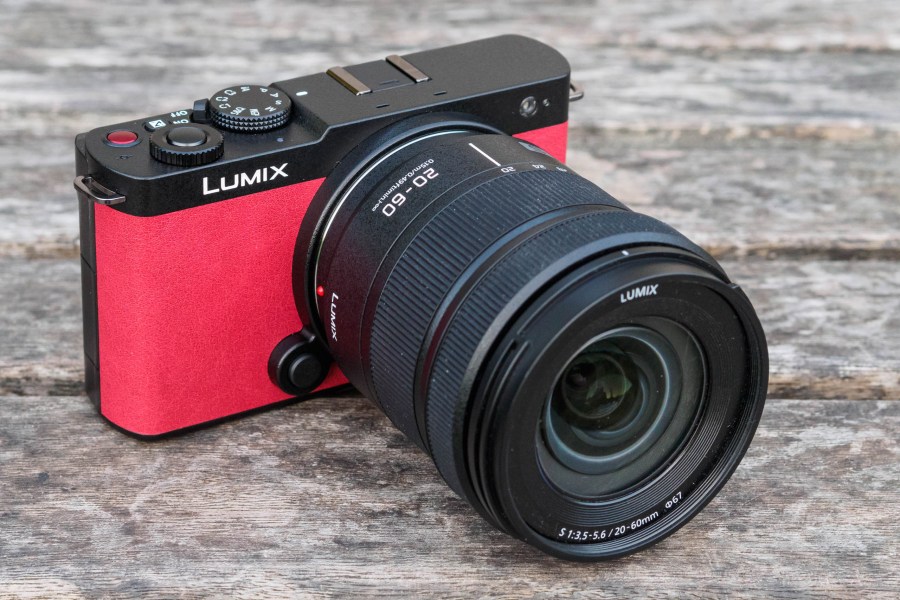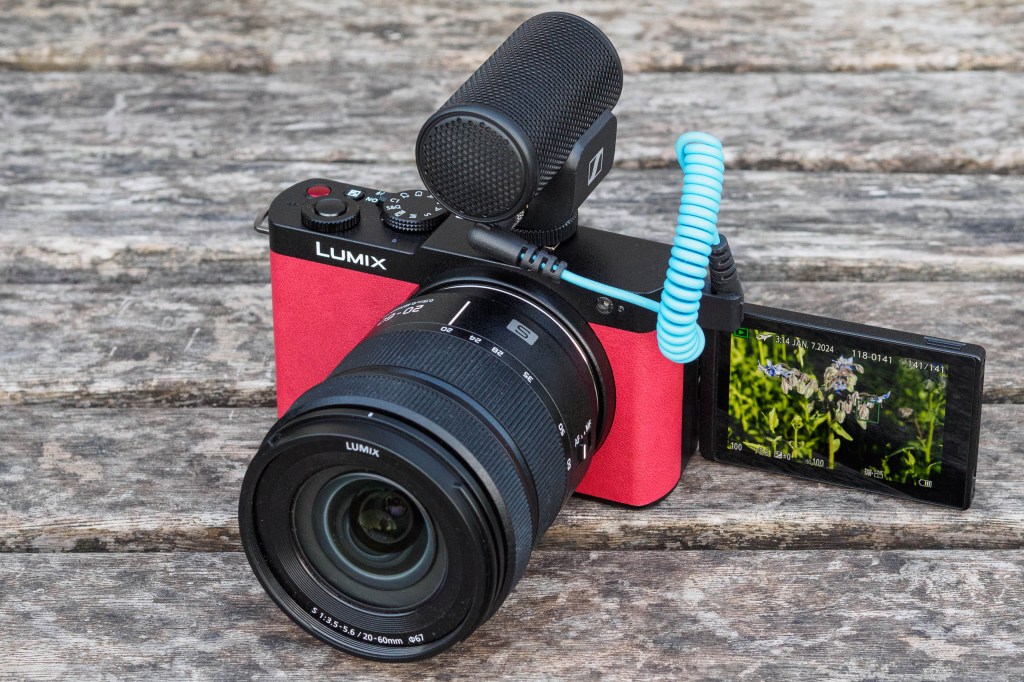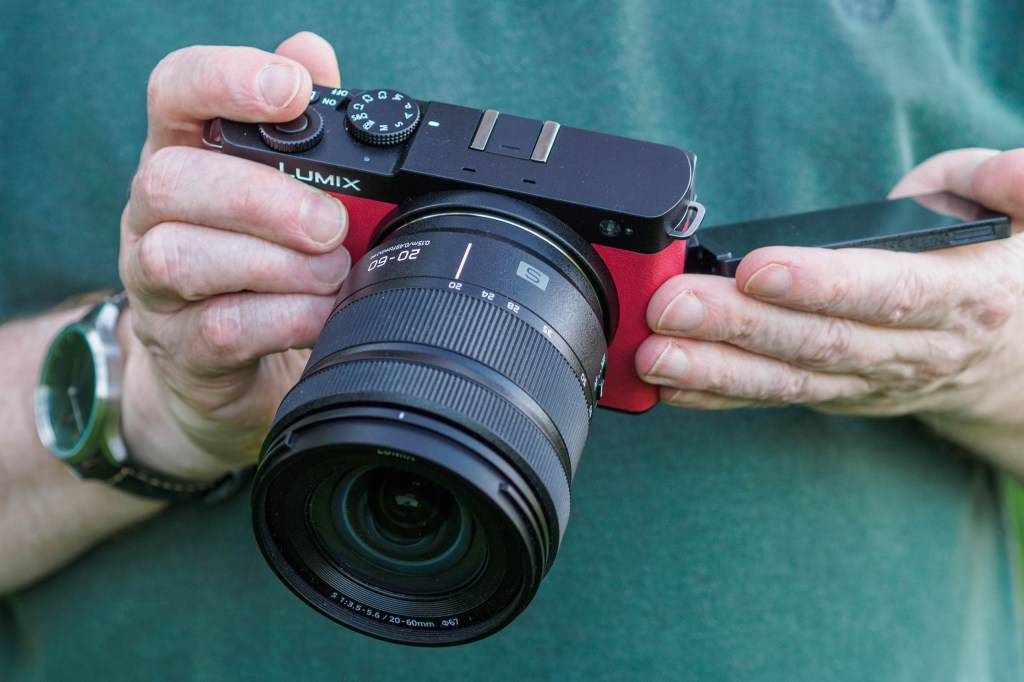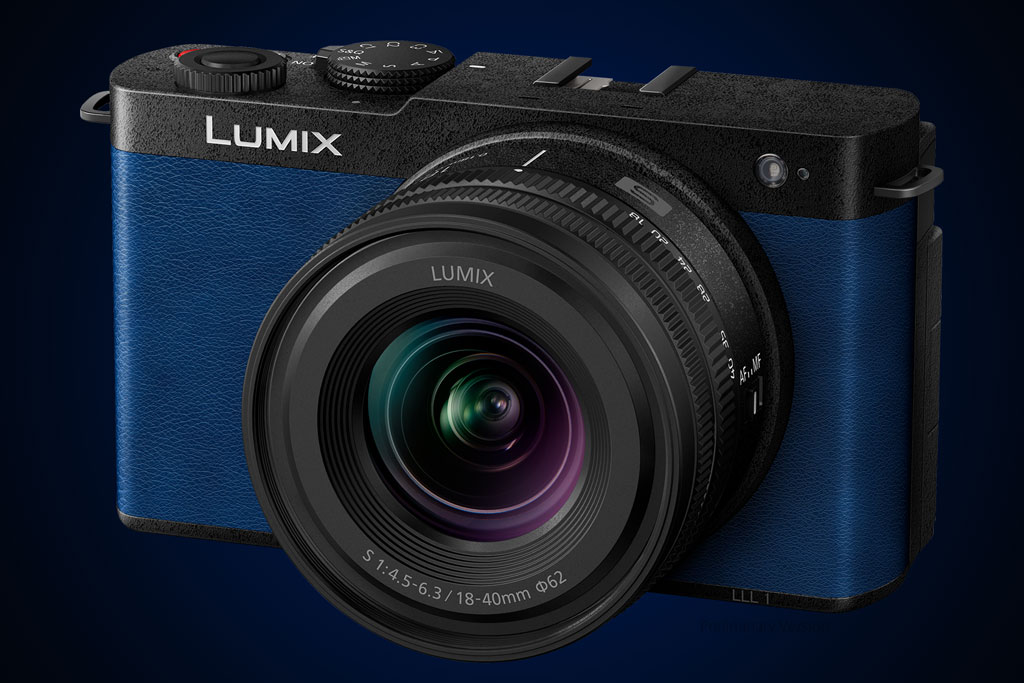While full-frame mirrorless cameras now dominate the market, there’s no getting away from the fact that they tend to be relatively large, bulky, and expensive. The new Panasonic Lumix S9 is Panasonic’s attempt to address this, by making a more compact and affordable alternative to its SLR-shaped Lumix S5II. But will this be enough for it to count as one of the best Panasonic cameras yet?
Panasonic Lumix S9 at a glance:
- £1499 body-only
- £1799 with 20-60mm lens
- £2249 with 28-200mm lens
- 24.2MP full-frame sensor
- ISO 100-51,200 (standard)
- Up to 30fps continuous shooting
- Video recording at 6K 30fps, 4K 60fps, or Full HD 120fps
- 3in, 1.84m-dot fully articulated touchscreen
- In-body stabilisation: 5 stops, or 6.5 stops with OIS lens
- Available in four colours: black, red, green, blue
With its flat-bodied, rangefinder-style design, the Lumix S9 is certainly a good-looking camera. Panasonic says it’s designed for hybrid users shooting both video and stills who wish to travel light. It’ll go head-to-head on the market with other small full-frame designs such as the Sigma fp and Sony Alpha A7C II.
To achieve its relative portability, the S9 makes some significant compromises. Firstly, it does without an eye-level viewfinder, relying solely on an articulated screen for composition. Secondly, it doesn’t have a mechanical shutter, employing an electronic shutter for shooting still images instead. Unusually, there’s also no way to use a flash; the shoe on top has no contacts and is purely for mounting a microphone, monitor/recorder, or LED light.
These design decisions appear to suggest that the S9 is primarily built for video. But even here there are significant omissions – for example, there’s no headphone port for monitoring audio, and you only get a Micro HDMI output. So the camera looks best suited to fairly casual users.
Panasonic Lumix S9: Features
Let’s take a look at what the S9 has to offer. In terms of features, it can essentially be seen as a smaller version of the Lumix S5II. It’s built around a similar 24MP full-frame sensor that provides a sensitivity range of ISO 100-51,200 as standard, extendable to ISO 50-204,800. The camera can shoot still images as fast as 30 frames per second, or 7 frames per second with live view between frames.
Autofocus employs a hybrid system, which combines phase and contrast detection for speed and accuracy. Subject detection can recognise people, animals, cars and motorcycles, and keep track of them as they move around the frame. As with the latest S5II firmware, face detection and subject detection are now organised logically on the same selection screen.
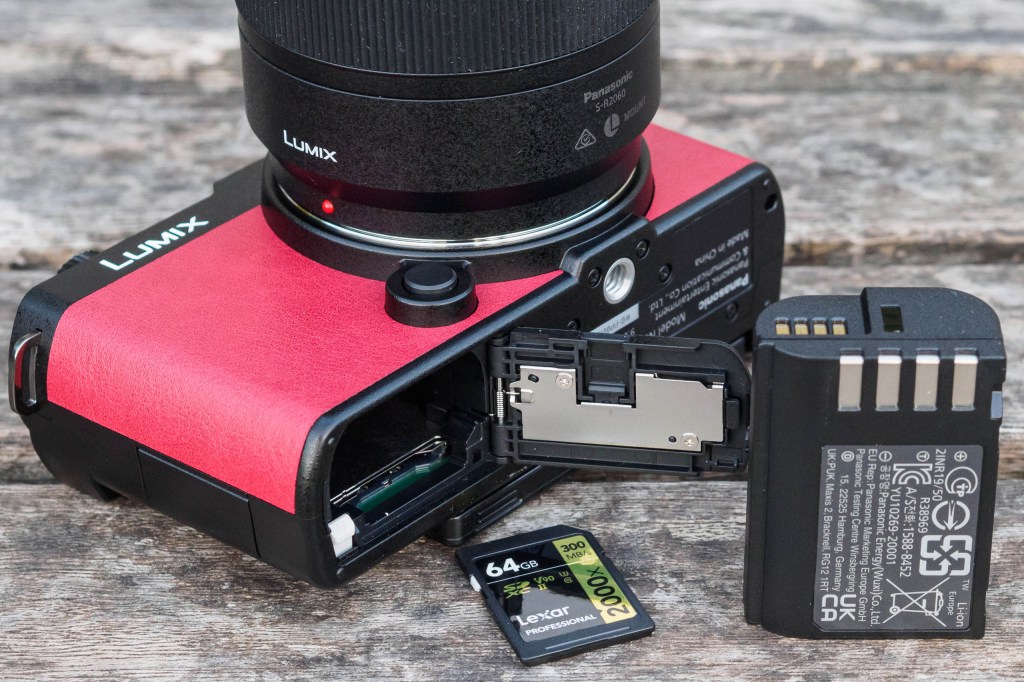
In-body image stabilisation promises 5 stops of shake reduction on its own, or 6.5 stops when used together with an optically stabilised lens. Both Wi-Fi and Bluetooth are built-in for smartphone connectivity.
Panasonic Lumix S9: Key Features
- L-mount: A good range of lenses is now available from Panasonic, Leica and Sigma
- LUT button: There’s a dedicated button for using LUTs to apply different colour looks to your images and videos
- New Lumix Lab app: A new Lumix Lab smartphone app is designed for quick and easy editing and sharing of videos, with a particular emphasis on downloading and using LUTs for creative colour effects
- No Viewfinder: The rear touchscreen can be positioned at almost any angle, but there’s no electronic viewfinder
- Shutter: There’s no mechanical shutter, with the S9 relying on an electronic shutter only
- Connectors: There’s a 3.5mm stereo mic socket on one side, plus Micro-HDMI and USB-C on the other
- Storage: Files are stored onto a single SD card, with the camera able to take advantage of faster UHS-II cards
- Power: The camera uses the same DMW-BLK22 Li-ion battery as the S5II
Panasonic Lumix S9: Video features
When it comes to video, you get many of the S5II’s advanced features, perhaps most notably 6K 30p ‘open gate’ recording. This outputs data from the entire sensor, rather than just a 16:9 strip. The idea here is that from a single piece of footage, you can output both conventional horizontal video and vertical crops for social media (assuming you can work out how to compose accordingly). Alternatively, you can record conventional 4K video at 60fps, or Full HD at 120fps.
However, the S9 gains a few new tricks of its own, which are designed to make it quicker and easier to share your creations. There’s a new MP4 Lite format that records in 3840 x 2560 resolution and 4:2:0 10-bit colour, delivering smaller files that can be transferred to your phone more quickly.
This works with the new ‘Lumix Lab’ app for Android and iOS devices, that’s specifically designed for the S9. This app aims to make it easy to edit and share your videos using only your smartphone, without any need for a computer.
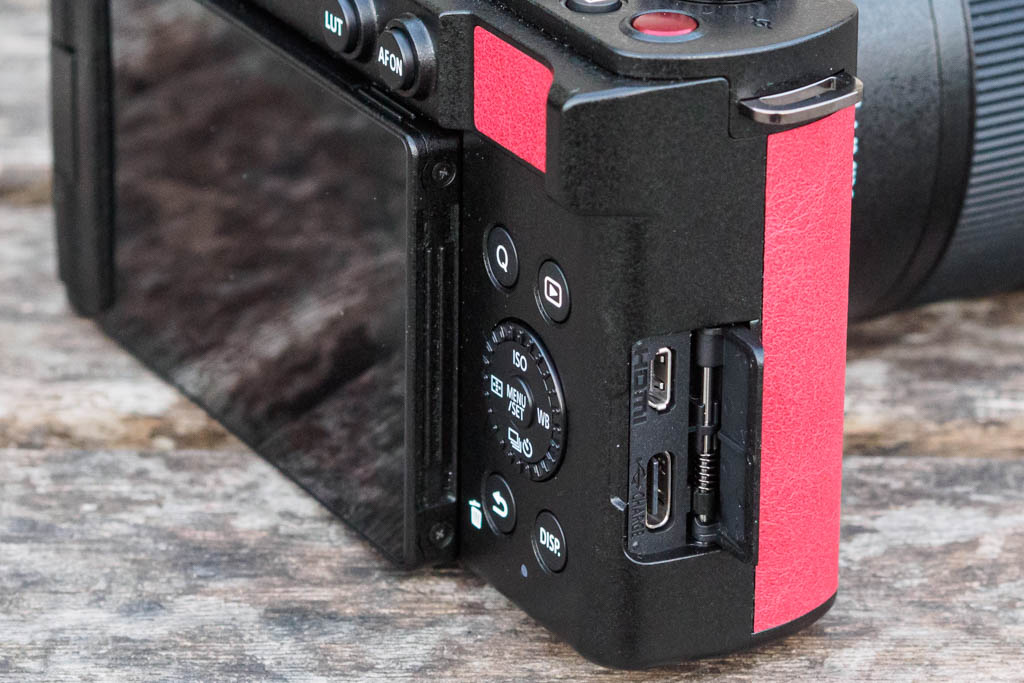
Panasonic has also emphasised the use of LUTs (or ‘Look-Up Tables’) to apply different colour looks to your output. These can be downloaded using the Lumix Lab app and either used for editing on your phone, or transferred to the camera to be applied during recording.
You can apply a LUT on top of any of the camera’s Photo Styles, rather than just footage recorded in a Log profile. There’s even a dedicated LUT button on the camera’s back to select which one you want to use.
Panasonic Lumix S9: Build and Handling
When it comes to body design, it must be said that the Lumix S9 is a rather handsome beast. With its flat front and subtly stepped top plate, it has an almost Leica-esque look. There are echoes of the cult-classic Micro Four Thirds Lumix GM1 here too, although it’s nowhere near as tiny.
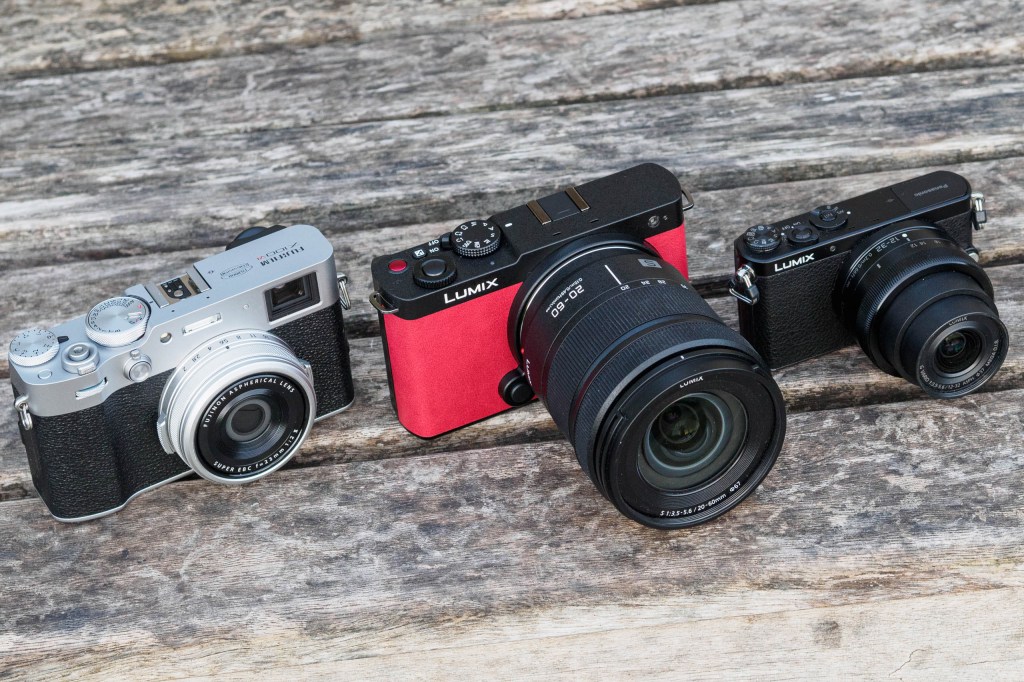
The flat, rangefinder-style body measures 126 x 73.9 x 46.7mm and weighs in at 486g, which means it’s similar in size to Sony A7C-series cameras, but slightly lighter. Panasonic is keen to point out that the S9’s body is fractionally smaller than the Fujifilm X100VI, which is great until you need to use a lens.
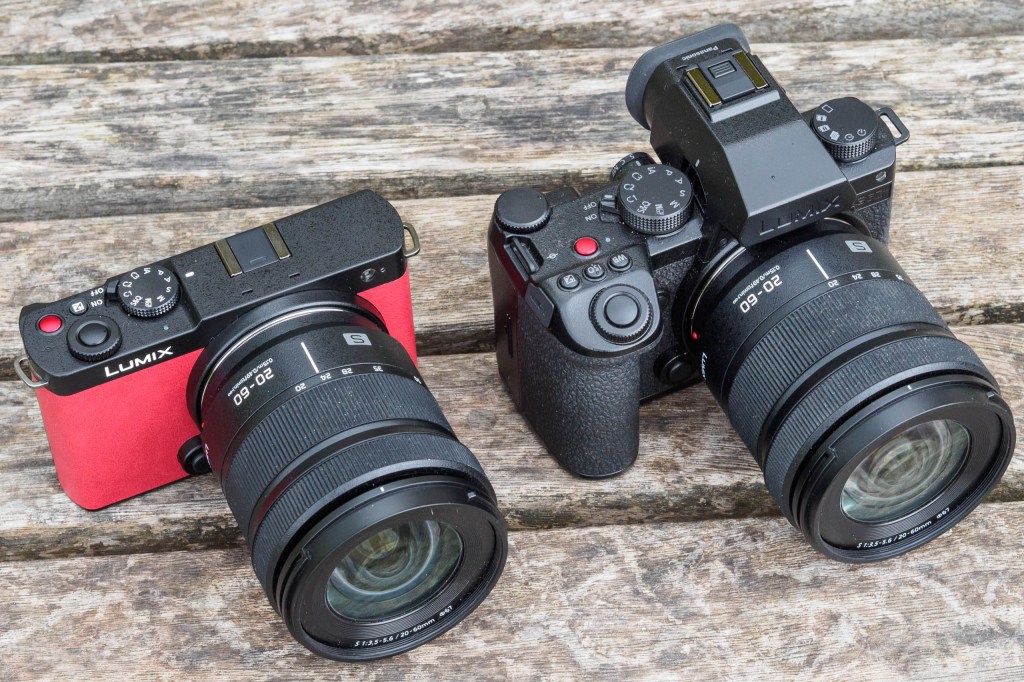
Notably, there’s no grip on the front, so this isn’t a camera you can easily carry around one-handed. Instead, you’ll need to use a strap and shoot two-handed, which is generally a good idea anyway. But even the small 20-60mm kit zoom feels somewhat cumbersome – this isn’t a camera I’d want to use with a large lenses. Doubtless we’ll see add-on handgrips appear soon from the likes of SmallRig.
Panasonic says it has a new 18-40mm F4.5-6.3 kit zoom in the works, which looks like it’ll be a much nicer match to the S9 in terms of size. Unfortunately, it won’t be arriving until later this year, which is a real shame. I suspect the S9 will make much more sense with this lens on board.
The firm has also launched a slimline 26mm pancake lens, but it’s manual focus only, has a fixed f/8 aperture, and will cost £219. Personally, I’d much rather have a conventional small lens akin to Nikon’s Nikkor Z 28mm f/2.8, which has a current street price of £249.
Turning our attention to the controls, Panasonic has kept things very simple. On the top plate, there’s a nice control dial around the shutter button for changing settings. But on the back you’ll find a tiny, fiddly combined dial/d-pad that feels like it’s been borrowed from a decade-old compact camera.
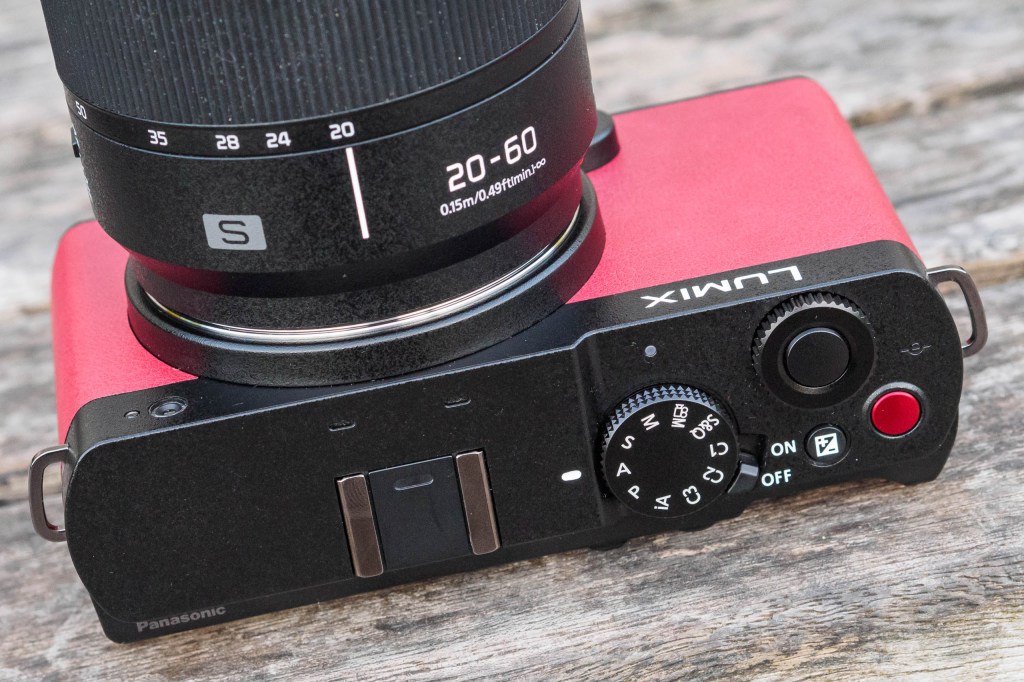
For focus point selection, the easiest option is simply to tap the screen; with no EVF, there’s no need for a joystick. It’s also possible to move the AF area using the d-pad, but the process is distinctly long-winded.

However, the moment you turn the camera to portrait format, touch focus-point selection becomes really quite awkward. This is due to the body’s gripless design, which meant I always wanted to keep my left hand underneath the camera for security. But I then struggled to stretch my thumb around and tap the screen accurately.
Panasonic Lumix S9: Viewfinder and screen
With no viewfinder onboard, and no means to attach an accessory EVF, you have to compose your images using solely the 3in, 1.84m-dot fully articulated touchscreen. This, unfortunately, is where things start to unravel for the Lumix S9.
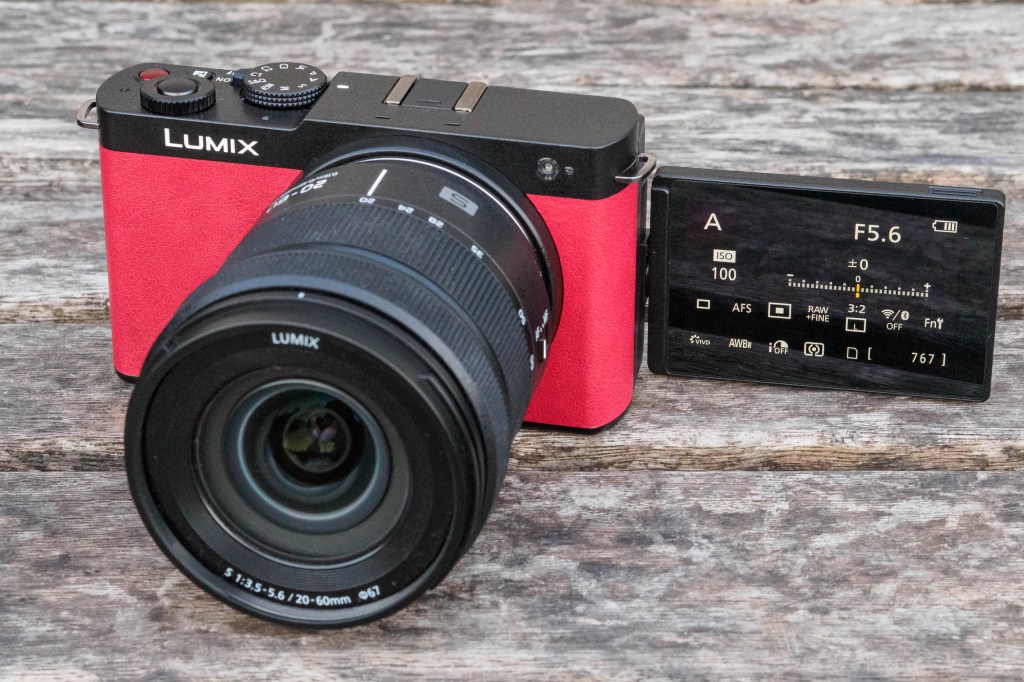
On the plus side, the screen is nice and detailed, and previews colours accurately. Unfortunately, though, I have to report that it’s simply not bright enough to see clearly on a sunny day, even with its backlight cranked up to the max. As a result, composition becomes little more than guesswork. This is going to be a serious problem, regardless of whether you’re shooting stills or video.
It’s also worth pointing out that with no viewfinder, this isn’t a camera that’ll work particularly well with telephoto lenses. You can’t sight a distant subject and bring the camera quickly up to your eye, as with SLR-like models. Instead, you have to take your eye off the subject, look down at the screen, and hope to pick it out again.
Using the DISP button on the back, you can cycle through four display modes while shooting. This includes a simple, uncluttered view, plus another with more detailed shooting information.
There’s also a ‘control panel’ view, which is useful on the S5II when you’re using the viewfinder, but seems out of place here. Oddly, you can also choose to turn the screen off entirely and leave it blank, which makes no sense on the S9 at all.
Panasonic Lumix S9: First Impressions
After using the Lumix S9 for a few days, my initial impression is that has too many compromises to be attractive to stills photographers. If you’re going to live without a viewfinder, you need a really good screen, but unfortunately the S9’s is far too dim to see properly on a bright day. I managed to get some shots I was happy with, but more by luck than judgement.

Likewise, the lack of a physical shutter will inevitably bring a risk of rolling shutter distortion with moving subjects, along with banding under artificial light. I also found that it often left me feeling strangely disconnected from the shooting process.

This means that, despite its rangefinder-like design, the S9 is perhaps better suited to video work. However even here, it’s limited by its use of a Micro-HDMI port and lack of a headphone socket. I guess Panasonic thinks that’s fine for travel vloggers who want a small and lightweight camera, but surely everyone would benefit from being able to check their audio while recording.

To be fair, it’s clear that in many respects, the S9 works very well. As on the S5II, autofocus is very reliable and image stabilisation is particularly impressive. There’s absolutely nothing to complain about in terms of image quality for stills or video, either. But the thing is, you can say that of pretty much every mirrorless camera on the market.

Ultimately, just like other small and relatively affordable full-frame models, the real problem with the S9 lies with everything it leaves out. Right now, I’m struggling to see who will be entirely satisfied using this camera. I’ll explore this more in my upcoming full review.
Follow AP on Facebook, Twitter, Instagram, YouTube and TikTok.
Panasonic Lumix S9: Full Specifications
| Sensor | 24.2MP full-frame CMOS, 35.6mm x 23.8mm |
| Output size | 6000 x 4000 |
| Focal length mag | 1x |
| Lens mount | L Mount |
| Shutter speeds | 60sec – 1/8000sec |
| Sensitivity | ISO 100-51,200 (standard), ISO 50-204,800 (extended) |
| Exposure modes | PASM, Auto, Video, S&Q |
| Metering | Multi, Centre weighted, spot, highlight |
| Exposure comp | +/-5 EV on 0.3EV steps |
| Continuous shooting | Up to 30fps |
| Screen | 3in, 1.84m-dot fully articulated touchscreen |
| Viewfinder | None |
| AF points | 779 |
| Video | 6K 30fps, 4K 60fps, 3.3K 48fps, Full HD 120fps |
| External mic | 3.5mm stereo |
| Memory card | UHS-II SD |
| Power | DMW-BLK22 Li-ion |
| Battery life | 470 shots per charge |
| Dimensions | 126 x 73.9 x 46.7mm |
| Weight | 486g inc battery and card |

